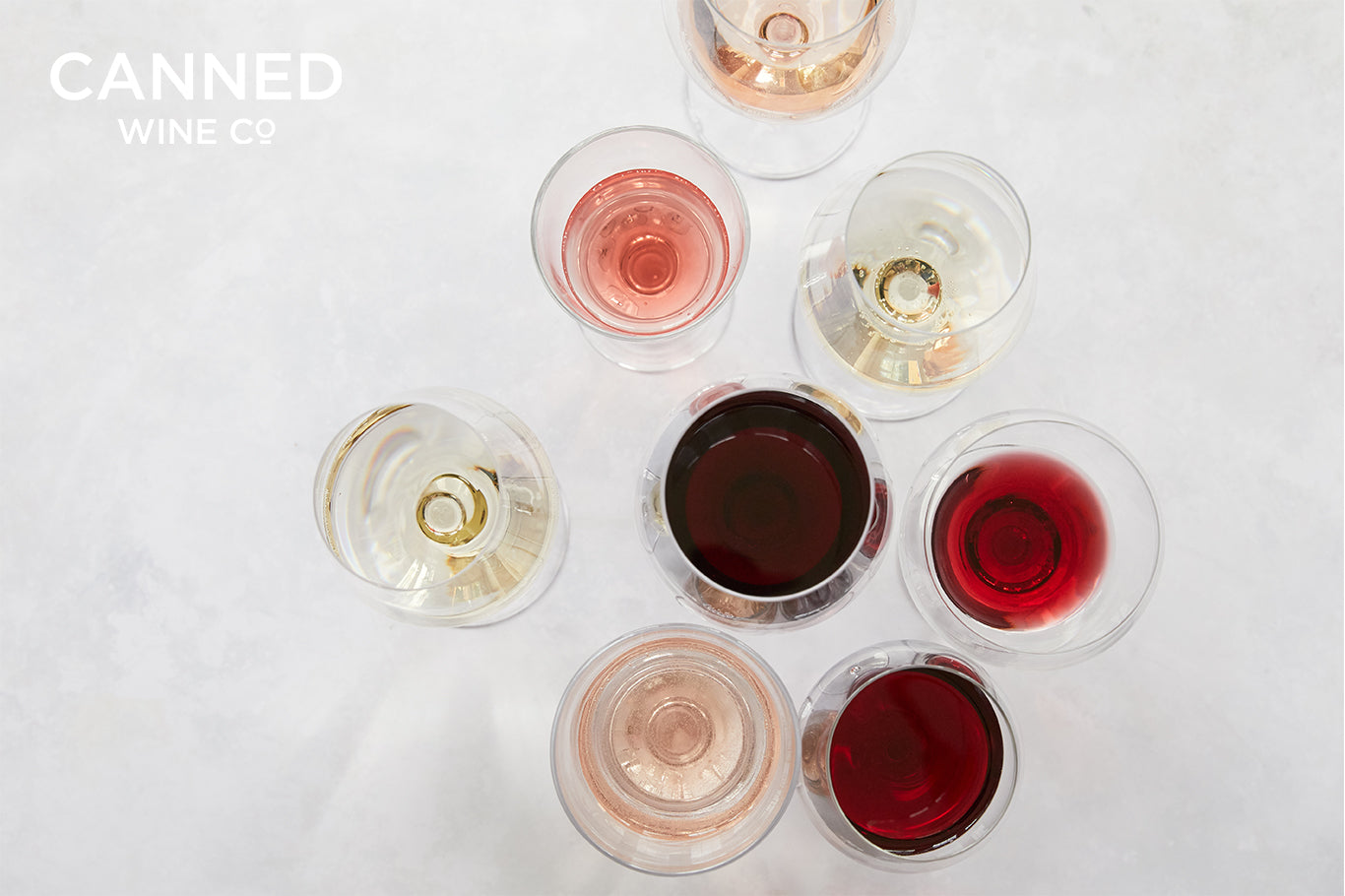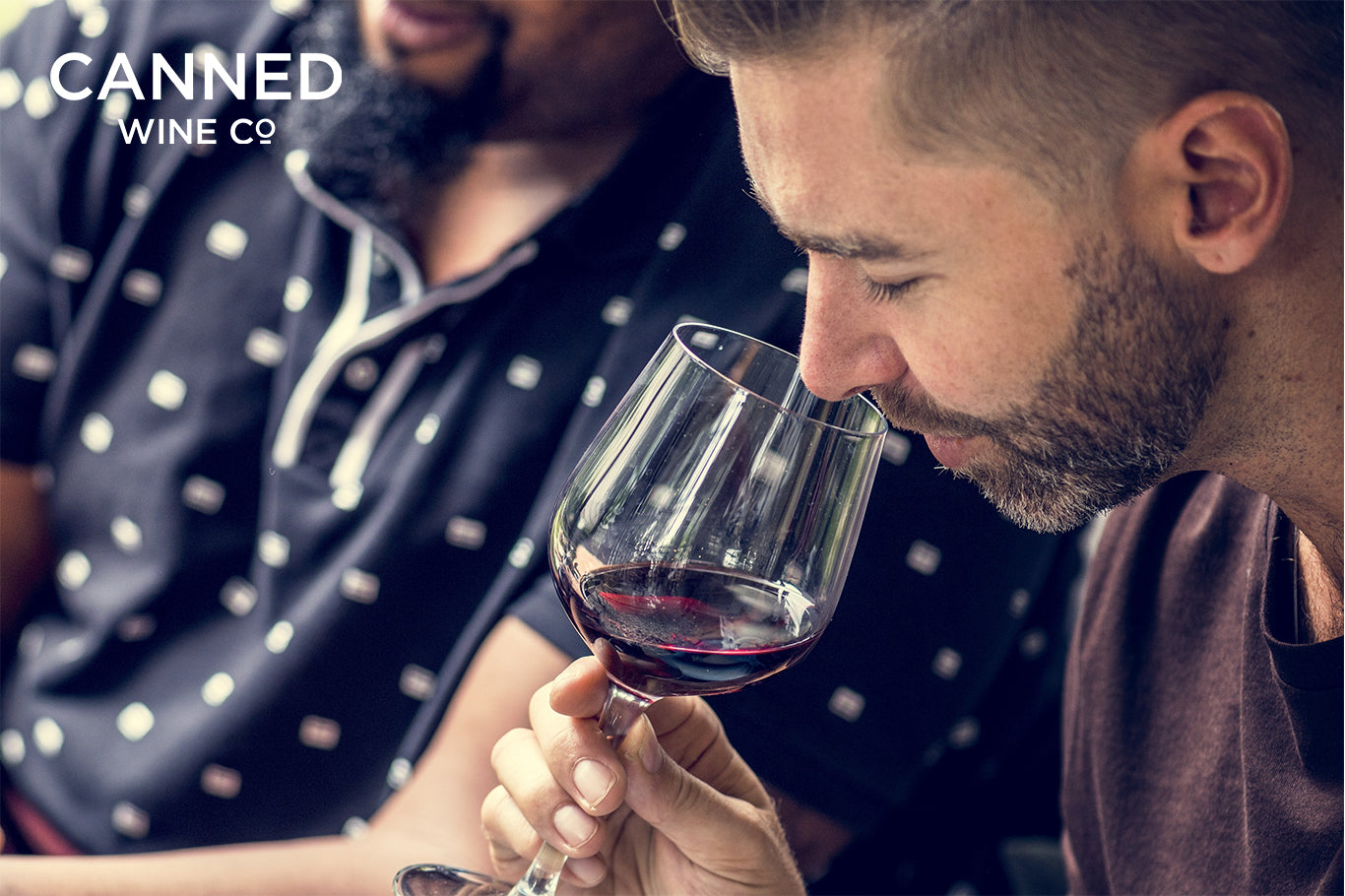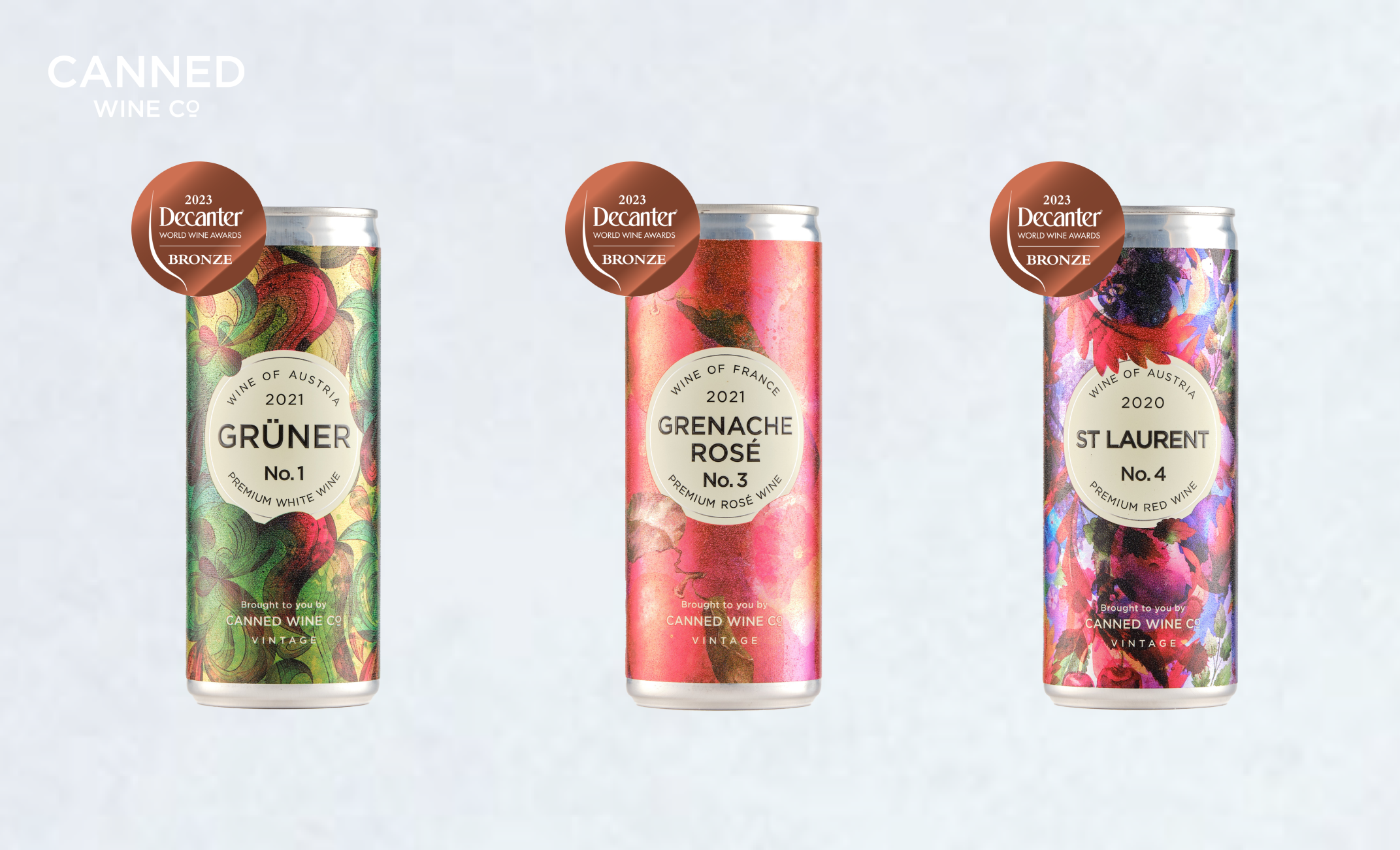Have you ever wondered why some people stare at a glass of wine before drinking it? The colour of a wine can provide a few clues about the wine you’re about to drink. If you’ve sipped our wines from a glass you’ll have noticed they range in hues from our clear lemon-green Grüner to our deep ruby Old Vine Garnacha. One of the wonderful things about wine is how much one tipple can differ so much from another.
The colour and clarity of a wine gives you many clues as to the style of wine you’re about to enjoy. Clues such as age, grape variety, density of flavour, acidity, how it was made and even where it comes from. Every variety of wine has a story that defines it and the colour is but one piece of the puzzle to deciphering what a specific wine is truly about. There’s a whole spectrum of colour in the wine world to explore, so we’ve put together a handy guide.
The basics of observing wine colour
Understanding wine colours and what creates those colours is fascinating.
- Begin by pouring your wine into your glass, but be careful not to fill your glass too much. This is to allow easier handling and more light to pass through the wine.
- Use a white background, preferably a piece of paper or blank wall, but a white shirt can work in a pinch too.
- Tilt the glass towards the white background and let the wine reveal its true hue.
Wine colour: what can I learn about the wine from its hue?
Let’s start by talking about the grapes. Different grape varieties have varying thickness of their skin, as well as different colours. In the winemaking process, there are several decisions to be made: how long should the juice be in contact with the skin? Is the wine fermented with the skins? A thick-skinned dark grape which is fermented with the skin will result in a deep red colour and indicate a full body.
Another question is whether the wine is aged, as ageing allows reactions between different molecules in the wine. Ageing in a wooden barrel also affects the colour.
Now let’s have a closer look at what the colour can tell us about the wine before taking the first sip.
White Wine Colours
Grapes, like most fruits (like lemons), are full of lightly-coloured molecules called flavonoids. It’s these flavonoids that give white wines their relatively light green-ish yellow colour as it comes out of the press. As the wine ferments and matures at the winery, it takes a firmer yellow colour, although some white wines still contain hints of a green hue (like our vibrant and zesty Grüner for example). Hues can range from lemon to gold, and in the case of Pinot Grigio a light grey. There are many words and vocabulary that describe the various hues, but just focus on these four and you’ll be fine:
Lemon-Green: This is a very pale shade with hints of green, typical for young and herbaceous wines with medium to high acidity. Sauvignon Blanc, Albariño and Grüner Veltliner are often associated with this colour.
Lemon: More towards yellow, these are young and dry wines with medium to high acidity. This colour is typical for a Pinot Grigio or our Viognier.
Gold: Ageing white wine impacts not only the taste, but also deepens the colour. Rich oak aged white wines are golden, such as an oaked Chardonnay or our Barrel Aged Verdejo.
Amber: This darker hue is reserved only for fortified or dessert wines, with lower acidity levels from the ageing process.
Flavours are more difficult to guess from the colour of a glass of white wine compared to that of a red. But, the intensity of the colour will give clues to the style and sweetness. You can generally expect a pale white wine to be fairly light, often dry, and dominated by primary fruit or floral characters and a more intensely-yellow wine with golden or amber hues to be richer, perhaps with oak and spices from barrel ageing. This is seen when you compare the wines in our White Wine Selection, Our Barrel Aged Verdejo is a pale gold compared to our medium lemon Viognier. Some sweet and fortified wines will be golden even when young, because they are made from riper and more intensely-coloured grapes.
Rosé Wine Colours
Rosé wines originated from the underripe harvest of red grapes. It has now become a craft of its own with winemakers like Thierry Boudinaud specialising in rosé wine. The colour of red and rosé wines comes from a pigment called anthocyanin. Anthocyanin is present in many other fruits and flowers, including plums, blueberries, and orchids. Anthocyanins are contained in the grape’s skin, whilst the juicy inside, called pulp, is always very pale with little colour. That’s why, the longer the grape is kept on the skin, the richer the colour of the wine will be. For example, our Grenache Rosé has minimal skin contact resulting in a delicate hue described as pale pink. In comparison, a deep pink rosé is the product of longer skin contact. Rosé wines come in many hues but there are two main ones to look out for:
Salmon: These are also young wines with a light to medium body but are drier than pink rosés. A good example is the beloved Provence rosé.
Pink: Pink wines are young, juicy wines with a light to medium body. A deeper shade of pink indicates more sweetness. Examples for typically pink rosés include Grenache Rosé and White Zinfandel.
When it comes to rosé wine though, the main thing wine lovers want to know is whether it’s dry or sweet. Typically, the deeper the pink, the sweeter and jammier the fruit flavours will be, whilst a paler hue suggests a drier and crisper wine. Additionally, a salmon coloured rosé will often have hints of melon, peach, mineral and floral notes alongside the red berries exhibited in a pink coloured rosé.
Red Wine Colour
By soaking the skins of red grapes in the juice for longer, higher levels of anthocyanin is released staining the wine red. Different red varieties produce different levels and expressions. When comparing the wines in our Smooth & Fruity Selection, you can observe the subtle differences in hue between our St Laurent and its inky purple hue compared to our deep ruby Old Vine Garnacha. Red wines come in a range of colours, but there are four hues the casual wine drinker really needs to know:
Purple: This is a young, juicy and fruity wine with a light to medium body and lower tannin levels. A good example is a Gamay or a young Malbec.
Ruby: Ruby wines are also younger and have red and black berry flavours. There is more variation within this colour, as these wines can be light to full-bodied and can have different tannin levels. Typical ruby-coloured wines are Pinot Noir, Garnacha and Merlot.
Garnet: These are oak-aged wines with medium to full body and higher tannin levels. The fruity and floral flavours give way for more complexity, this can include savoury or spicy notes. Barolo, Rioja and an aged Cabernet Sauvignon would be described as garnet.
Tawny: Tawny wines are either fortified or aged over decades, allowing the brown colour. The ageing softens the body tannins, such as in a Tawny Port.
The complexities of red wines are expressed in their colours. Acidity, tannins, sulphites, and temperature are but some of the factors that have an impact on the colour of red wines. From higher acidity creating brighter reds, more tannins causing darker and more intense colour, to higher temperatures during fermentation and levels of sulphites leading to less colour.
Secondary Colours
Secondary colours are the other hints and hues in a glass. In white wines these hints are green or straw, whilst in reds there can be hints of orange, brown, magenta or brick. These colours are typically found in the rim of the wine as it goes towards the edge of the glass. If the variation in colour is wide it can be an indication of an older wine, whilst a narrower variation can mean the wine is still young.
Wine Colours Typical of Certain Regions
Everything from the thickness of the grape’s skin to weather conditions and the winemaking techniques used influence the colours and hues of a wine. Different grape varieties have different characteristics and growing conditions. Certain varieties will thrive in certain climates giving regions trademark hues. This is particularly evident in the famous French regions such as Bordeaux and Provence that have become synonymous with certain hues.
With all of this knowledge, why not have a little fun with it the next time someone hands you a glass of wine? See if you can guess your next tipple’s flavours, style and where it’s from before you taste it. Why not get our Tasting Selection and practice with your friends!






